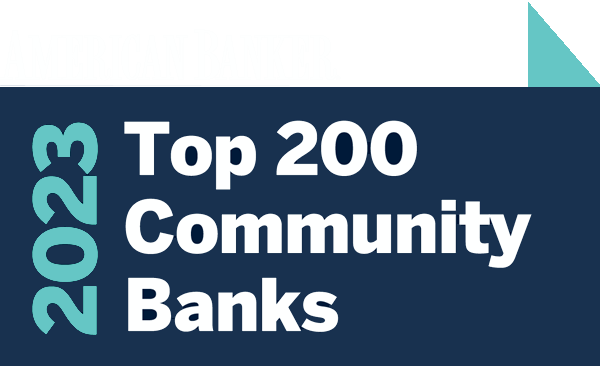By Miriam Cross | April 3, 2024
‘Not a ceremonial position’: The need for tech-savvy boards

How crucial is the presence of a former Google software engineer or megabank CIO on your board?
A marquee name on a board member’s résumé is not essential, but a “tech-savvy” board is one of the strongest correlations of high performance in banking, in terms of total shareholder return, cost to income ratio and Net Promoter Score, according to a 2023 report by Bain & Company.
What “tech-savvy” means is up for debate. But bankers and industry experts agree that a minimum of two members with substantial technological backgrounds is key, as is training that goes beyond the balance sheet. A subcommittee dedicated to technology can also raise this sector’s profile within a financial institution.
The emergence of artificial intelligence will exacerbate the need for board members with a rich digital heritage, said Steven Breeden, who heads Bain’s financial services technology practice in the Americas. A strong showing of such expertise is critical for top 20 banks, given the complexity of their operations and the billions of dollars they may pour into technology investments each year. Yet banks of all sizes will benefit.
“I’m a former chief information officer at a $3 billion-asset community bank and we absolutely recognized that we needed tech fluency on our board,” Breeden said.
At the same time, it’s difficult to find people up to the task. “It’s not a ceremonial position anymore,” said Brad Scovill, president and CEO of the $2.5 billion-asset C&N Bank in Wellsboro, Pennsylvania. “The business has gotten more complicated in the last twenty to thirty years.”

What a tech-savvy board looks like
Research from the Massachusetts Institute of Technology resonates with Sathish Muthukrishnan, chief information, data and digital officer at Ally Financial. A report from its Sloan School of Management in 2019 found that companies with three or more digitally savvy directors exhibited statistically significantly better financial performance in terms of revenue growth, return on assets and measures. The report found no significant differences in financial performance when a company had one or two digitally savvy directors.
The Detroit-based Ally counts several on its board, including a vice-president at Google, a former chief information officer at Bank of America and the former CEO of vacation rental website HomeAway.
In Breeden’s experience, leading banks would have at least one board member who hails from a technology or software company, and at least one person who has led a major innovation, transformation or modernization project at a financial institution or another company that relies on technology, data, analytics or AI as a differentiator.
“Not everyone is bringing in an executive from Silicon Valley,” said Breeden. “There is a vast ocean of technology-fluent people who have either worked in the industry or in financial services in a technology-oriented role.”
That is the case with Citizens Bank of Edmond in Edmond, Oklahoma. Its board is composed of representatives from the health care, journalism, construction and architecture industries. Their work may not be directly correlated to banking but “they have had to adapt to stay relevant,” said Jill Castilla, president and CEO of the $384 million-asset community bank.
Some banks go a step further and establish a committee dedicated to technology within the board.
Muthukrishnan spearheaded a technology committee within the board at the $186 billion-asset Ally in 2020 with then-CEO Jeffrey Brown that would focus on technology investments, weigh cybersecurity concerns and assess how the bank is delivering on digital capabilities for its customers. It replaced the previous digital transformation committee. Muthukrishan and his team present their strategy to the committee when the board meets five times each year.
“It has elevated the conversation with the board,” he said. “There is tremendous support for our technology road map and investments.”
MainStreet Bank in Fairfax, Virginia, is considerably smaller than Ally, at $2 billion of assets. But it formed a technology committee around the same time it recruited Terry Saeger, a director with a background in telecom, for its bank and holding company boards in 2011.
That committee now comprises four independent directors and two inside directors. The most recent addition is Ali Manouchehri, CEO of MetroStar Systems, a provider of digital information technology services for the public sector, who joined in February.
When Terry came on in 2011, that was very intentional. When Ali came on most recently, that was extremely intentional.
– Jeff Dick, Chairman & CEO of MainStreet Bank
With six branches, MainStreet has long relied on remote services for its customers. A few years ago, it introduced its banking-as-a-service subsidiary Avenu.
“We always differentiated ourselves by our technology,” said Dick. The technology committee “has always looked at the things we’re doing to make sure we’re protecting our data appropriately, getting cyber and intrusion testing and more, to give the board confidence that we’re doing everything we need to do as a small company.”
Dick was once an examiner at the Office of the Comptroller of the Currency.
“I know it’s important the board looks at risk management and says it’s appropriate,” he said. “I’d be more concerned about going forward with technology projects if I didn’t have my directors looking at it from a good place.”
How to make it happen
There are ripe opportunities to shake up a board when members roll off or retire, or the institution undergoes a merger.
“At the community bank level, they don’t change over boards often enough,” said Jason Henrichs, founder and CEO of community bank consortium Alloy Labs Alliance.
When recruiting new directors, banks need to clarify the problems they want to solve and what kind of person will help them get there.
“You have to ground it in the why,” said Breeden. For instance, does the bank feel that technology is essential to how it will compete with others, and need board members who will prod that vision forward?
“In some cases, you’re looking for someone who has been there, done that in terms of major technology modernization. In others, you’re looking for someone outside of financial services who can think about the art of the possible and bring more of a disruptive lens to the role of tech in banking,” said Breeden. “Both archetypes are valid depending on where the bank is at.”
Castilla has recruited three board members during her tenure, including the CEO of a health care system and a former chief financial officer for the state of Oklahoma.
“What I loved was when talking to them about the board, they asked me, is the bank’s technology adequate? What are plans for the future?” she said. “It was a clear priority for them that any board or bank they wanted to be a part of was one that would evolve.”
Carey Ransom, managing director of BankTech Ventures, a venture capital fund with banks as limited partners, recommends assessing how well board members understand modern technology architecture, such as the cloud, and how well versed they are in the world of data.
“It’s not so much about whether you understand AI today, but do you understand how it is evolving?” he said.
Yet finding someone with a fitting background who can balance board commitments with a full-time job is a tall order.
“The folks that are up on technology are actively engaged in their own careers, and being on a bank board is not a small task anymore,” said Scovill, who experienced this at C&N when a CIO of a local hospital system stepped off after three years because of time constraints. “With the pace at which technology is moving, finding that person who is in the game and understands current technology and how it applies to our business — that is a recent skill set.”
Henrichs advocates that banks invest in board training that goes beyond the balance sheet and deep into strategy.
Tech-savvy boards “reallocate resources in real time and don’t view that as a failure in their process, but a sign they are a learning organization,” he said. “This requires a deeper strategic understanding than a balanced budget with expense buckets that don’t change over the year.”
The Citizens Bank of Edmond board, including Castilla, attend a bank director training program every year through the Southwest Graduate School of Banking at Southern Methodist University’s Cox School of Business. Board members regularly participate in that program’s certified community bank director’s program as well.
Castilla will align strategic planning sessions to the annual training program. Roger, Citizens’ digital bank for military personnel, is one idea that emerged from these sessions. Castilla put together an advisory board when launching Roger, which included a fintech founder and advisor with military experience and a retired army officer who led modernization projects.
“If we didn’t have this training, I don’t think [the board] would be as well equipped to ask challenging questions to management,” said Castilla.
Posted with permission from the April 3, 2024 issue of American Banker ® www.americanbanker.com. Copyright 2024. All rights reserved. For more information on the use of this content, contact Wright’s Media at 877-652-5295.


